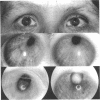Abstract
In nine members from three generations and in a distant relative, at least three significant characteristics of the ectopia lentis et pupillae syndrome were established including ectopia lentis, ectopia pupillae, persistent pupillary membrane, iris transillumination, and poor pupillary dilatation. All patients developed bilateral cataract before the age of 40 years, and two patients presented with intermittent acute intraocular hypertensive crises. Not only the high number of patients in one family, but also the occurrence in three generations is very exceptional for the ectopia lentis et pupillae syndrome. Although the syndrome is said to be inherited in an autosomal recessive mode, in this family, a mother to son and a mother to daughter transmission were present. Pedigree analysis yielded arguments in favour of an autosomal dominant inheritance with reduced penetrance. A biochemical correlation was not identified.
Full text
PDF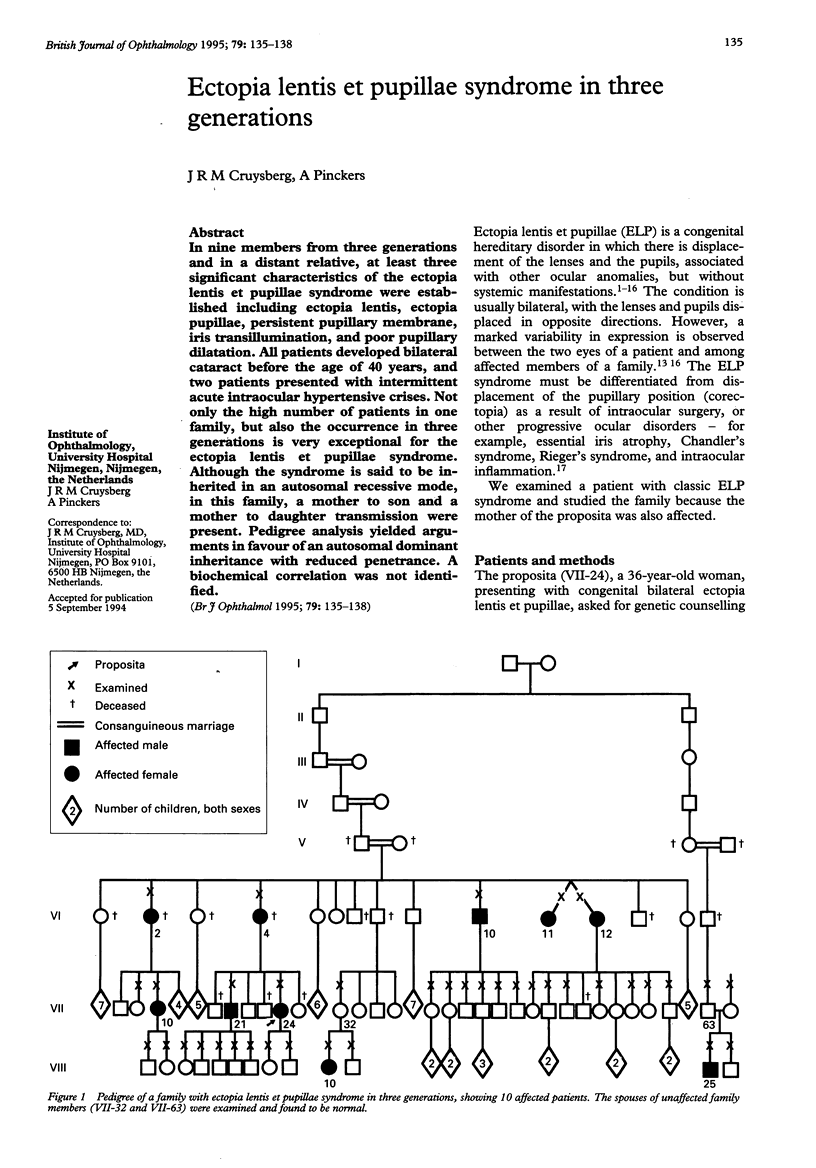
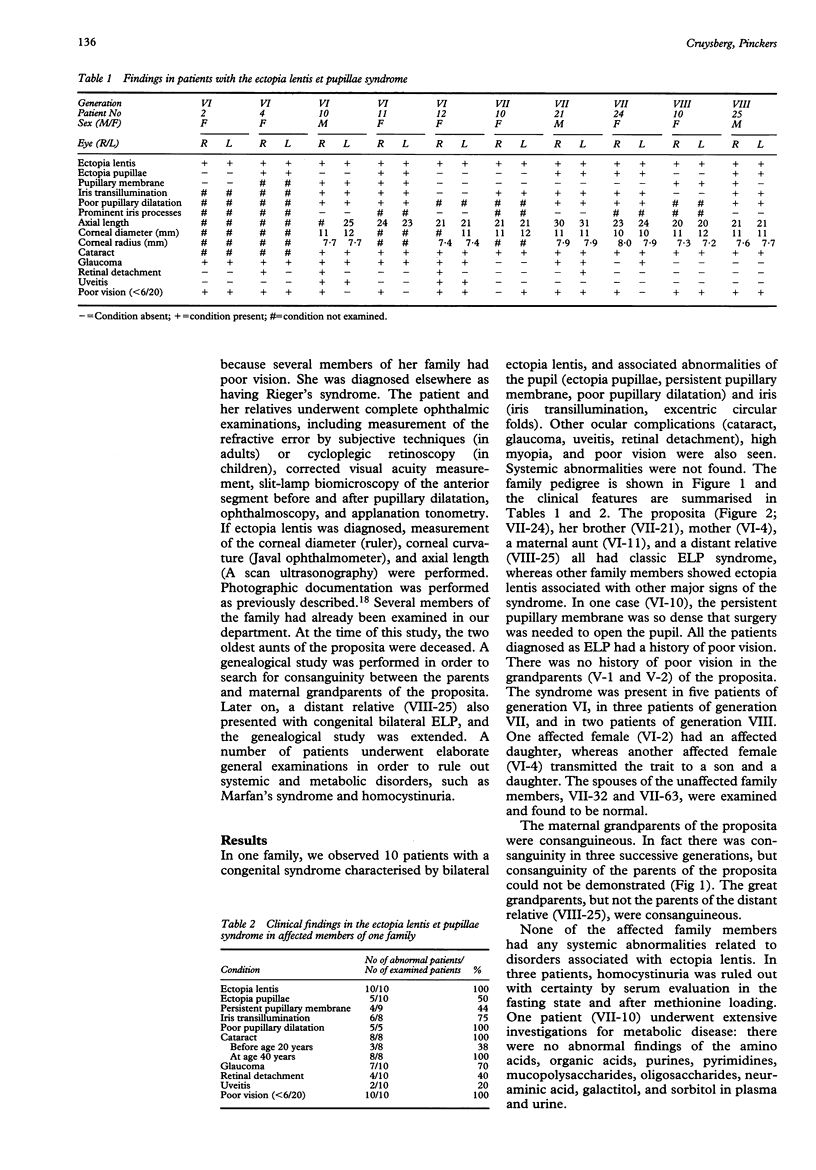
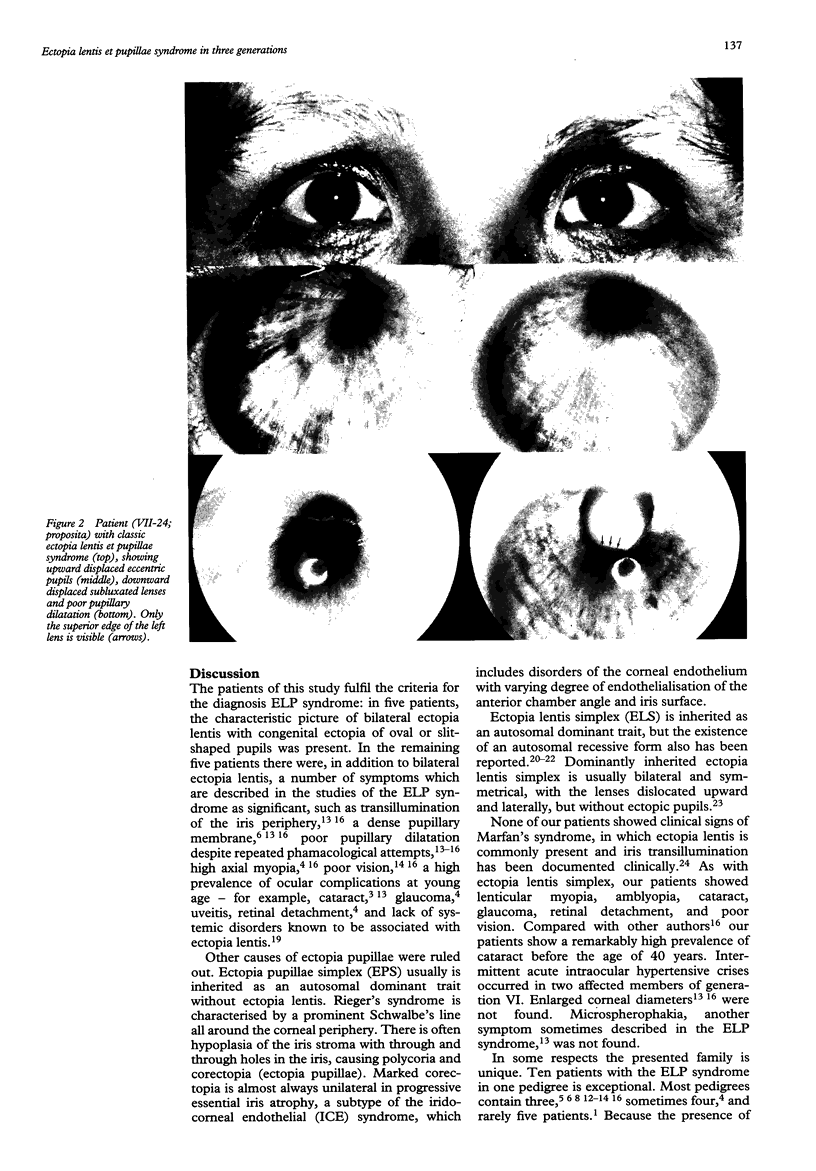
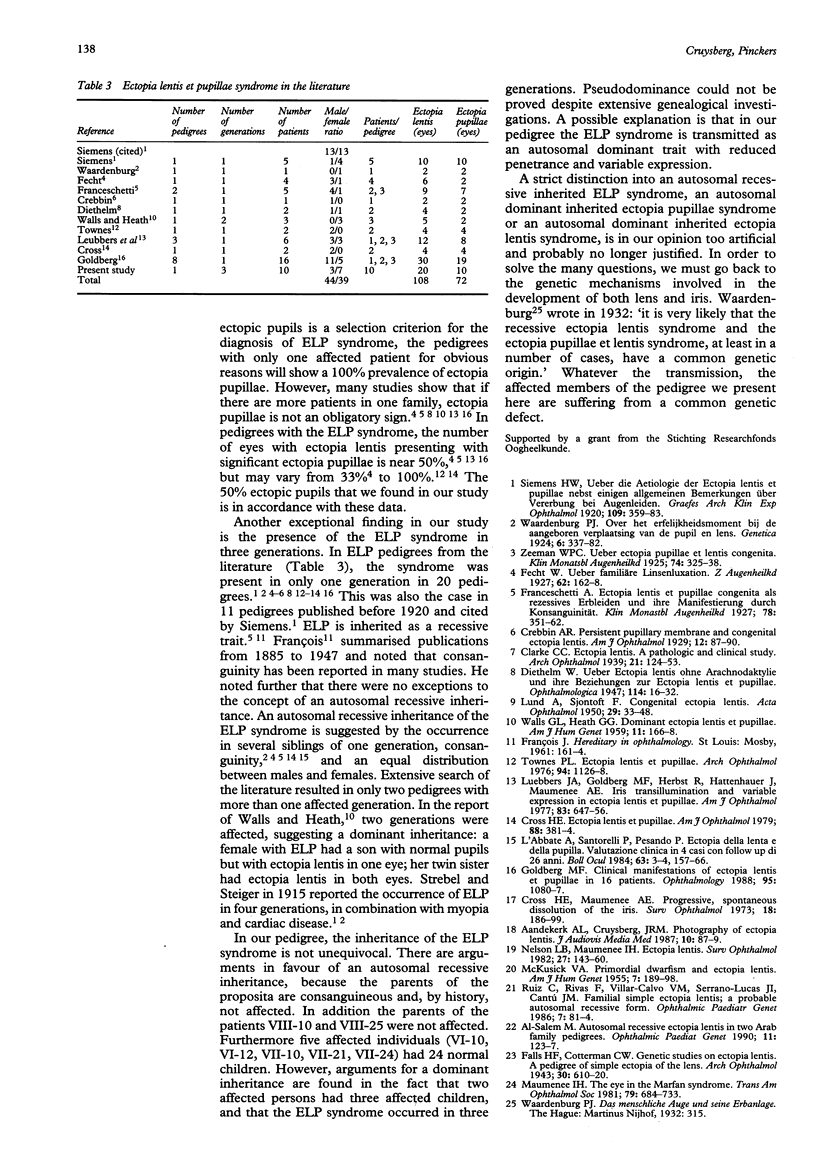
Images in this article
Selected References
These references are in PubMed. This may not be the complete list of references from this article.
- Aandekerk A. L., Cruysberg J. R. Photography of ectopia lentis. J Audiov Media Med. 1987 Jul;10(3):87–89. doi: 10.3109/17453058709150304. [DOI] [PubMed] [Google Scholar]
- Cross H. E. Ectopia lentis et pupillae. Am J Ophthalmol. 1979 Sep;88(3 Pt 1):381–384. doi: 10.1016/0002-9394(79)90637-8. [DOI] [PubMed] [Google Scholar]
- Goldberg M. F. Clinical manifestations of ectopia lentis et pupillae in 16 patients. Ophthalmology. 1988 Aug;95(8):1080–1087. doi: 10.1016/s0161-6420(88)33043-5. [DOI] [PubMed] [Google Scholar]
- LUND A., SJØNTOFT F. Congenital ectopia lentis. Acta Ophthalmol (Copenh) 1950;28(1):33–48. [PubMed] [Google Scholar]
- Luebbers J. A., Goldberg M. F., Herbst R., Hattenhauer J., Maumenee A. E. Iris transillumination and variable expression in ectopia lentis et pupillae. Am J Ophthalmol. 1977 May;83(5):647–656. doi: 10.1016/0002-9394(77)90130-1. [DOI] [PubMed] [Google Scholar]
- Maumenee I. H. The eye in the Marfan syndrome. Trans Am Ophthalmol Soc. 1981;79:684–733. [PMC free article] [PubMed] [Google Scholar]
- McKUSICK V. A. Primordial dwarfism and ectopia lentis. Am J Hum Genet. 1955 Jun;7(2):189–198. [PMC free article] [PubMed] [Google Scholar]
- Nelson L. B., Maumenee I. H. Ectopia lentis. Surv Ophthalmol. 1982 Nov-Dec;27(3):143–160. doi: 10.1016/0039-6257(82)90069-8. [DOI] [PubMed] [Google Scholar]
- Townes P. L. Ectopia lentis et pupillae. Arch Ophthalmol. 1976 Jul;94(7):1126–1128. doi: 10.1001/archopht.1976.03910040042007. [DOI] [PubMed] [Google Scholar]
- WALLS G. L., HEATH G. G. Dominant ectopia lentis et pupillae. Am J Hum Genet. 1959 Jun;11(2 Pt 1):166–168. [PMC free article] [PubMed] [Google Scholar]
- al-Salem M. Autosomal recessive ectopia lentis in two Arab family pedigrees. Ophthalmic Paediatr Genet. 1990 Jun;11(2):123–127. doi: 10.3109/13816819009012957. [DOI] [PubMed] [Google Scholar]



